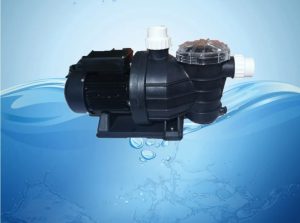What To Bring For A Successful Winter Camping Experience

Winter camping is a truly unique experience that differs markedly from the more common summer trips. This means you need to pay more attention to preparing your trip in addition to planning where you would like to go.
It is crucial to take with you everything you may need for a winter hike because even a mild winter with comfortable temperatures and good weather still has a number of aspects that are worth considering. Moreover, the weather may always change dramatically in winter.
Even though winter camping is not as common, it is still a great opportunity to spend some great time outdoors. The main thing is to know what you should take with you in order to properly prepare for the trip.
Cold and snow are not a reason to refuse unique travel experiences. Get a reliable winter tent, bring your gear, and enough warm clothes, as well as choose an interesting place to visit with friends to enjoy the beauty of winter.
Let’s take a closer look at the winter camping checklist needed for a successful camping trip.
What Should You Take On A Winter Camping?
The first step when planning a camping trip is to have the right equipment for cold winter conditions. We have divided the gear into categories:
Stoves And Heaters
These are really useful things for winter camping. You can buy a small portable heater to warm a specific area of the tent, or a wood stove to heat the entire shelter.
To avoid the risk of getting sick, it is crucial that the temperature in the tent is comfortable for sleeping and that you do not shiver from the cold. You can also use the stove in the tent to boil water and prepare hot drinks.
Drink enough fluids to stay hydrated and maintain your body temperature.
Sleeping Bags And Pads
The next thing you should take with you is a sleeping bag and a pad. It is essential to make sure they are rated for low and extreme temperatures.
In most cases, a sleeping bag made of quality materials and marked winter or year-round is sufficient for winter camping. However, if you are traveling to an area with extreme temperatures, it is also recommended to take a pad with you. A pad will help keep you warm due to an additional layer of insulation.
Clothing
Choosing the right clothes for winter camping is very important. It is worth buying warm clothes in specialized stores for hiking and winter sports.
The basic rules are:
Wear layers of clothing. The top layer of clothing should protect against water. Therefore, choose clothes made from waterproof material. The inner layer of clothing should keep you warm. Clothing made from cotton or other lightweight or natural materials should be avoided as they tend to lose heat.
Protect the most vulnerable parts of the body, such as the neck, head, arms, and legs. These areas lose heat the fastest, so wear hats, gloves, scarves, and warm socks to keep them warm.
Also, have several pairs of socks and at least one spare pair of shoes. Your shoes are the most likely to be exposed to water and snow and absorb moisture. Therefore, care must be taken to protect your feet and keep them dry.
Shelter
When choosing a tent, always consider the material and design features. Make sure your shelter is made of waterproof, tear-resistant fabric and that your tent has metal poles. Protection from water, snow, and strong winds, which often occur in high mountain areas, is especially critical.
You can choose an all-season tent but always pay attention to what temperatures it is suitable for. Also, check the tent’s ventilation beforehand to make sure it is safe to use a wood stove inside.
Helpful Items
The list of equipment you need to take on camping varies greatly depending on the purpose of the trip. However, there is a basic set of gear that will be useful in winter camping.
When going in nature, take a shovel, ax, and knife with you. These items solve many problems that may arise. In addition, shovels help clear snow for setting up a tent.
Next are the materials needed to start a fire and cook food. These include waterproof matches, fuel, dry firewood or charcoal, a portable camp stove, and gas cylinders. In addition, bring a thermos for hot drinks, as well as several bottles of water, a cup, forks, spoons, and plates.
Since it’s easy to catch a cold during winter camping, you need to take a first aid kit with anti-inflammatory and antiviral drugs.
As a bonus, you can get a RescueMe gadget for safety reasons before your hike. Winter weather presents many dangers, such as blowing snow, poor visibility, snowy water surfaces, and avalanche danger. Therefore, a rescue tool may help you ensure your safety in emergencies.
Finally, bring the following items with you that will make your camping experience better:
- Batteries or portable generator
- Hand warmers and shoe dryers
- Flooring for better insulation
- Flashlights, batteries, and LED lamps
- Protective containers for storing electronic devices and appliances in frosty weather
The list of helpful items also includes toiletries and personal hygiene items. Your camping checklist may vary depending on your preferences and planned activities. However, always remember about the basic set because the comfort of your camping largely depends on it!






